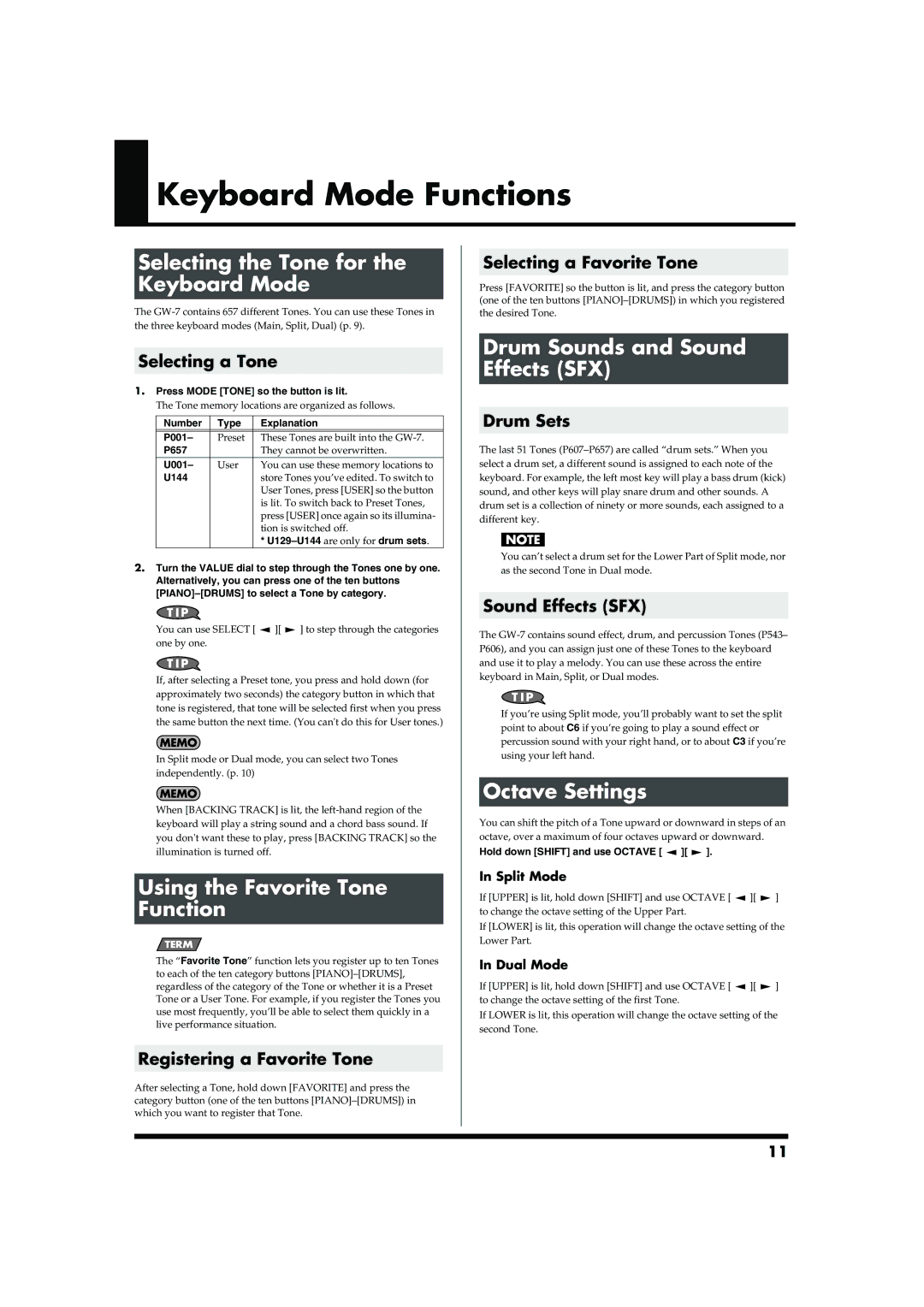
 Keyboard Mode Functions
Keyboard Mode Functions
Selecting the Tone for the Keyboard Mode
The
Selecting a Tone
1.Press MODE [TONE] so the button is lit.
The Tone memory locations are organized as follows.
Number | Type | Explanation |
|
|
|
P001– | Preset | These Tones are built into the |
P657 |
| They cannot be overwritten. |
U001– | User | You can use these memory locations to |
U144 |
| store Tones you’ve edited. To switch to |
|
| User Tones, press [USER] so the button |
|
| is lit. To switch back to Preset Tones, |
|
| press [USER] once again so its illumina- |
|
| tion is switched off. |
|
| * |
2.Turn the VALUE dial to step through the Tones one by one. Alternatively, you can press one of the ten buttons
You can use SELECT [ ![]() ][
][ ![]() ] to step through the categories one by one.
] to step through the categories one by one.
If, after selecting a Preset tone, you press and hold down (for approximately two seconds) the category button in which that tone is registered, that tone will be selected first when you press the same button the next time. (You can't do this for User tones.)
In Split mode or Dual mode, you can select two Tones independently. (p. 10)
When [BACKING TRACK] is lit, the
Using the Favorite Tone Function
The “Favorite Tone” function lets you register up to ten Tones to each of the ten category buttons
Registering a Favorite Tone
After selecting a Tone, hold down [FAVORITE] and press the category button (one of the ten buttons
Selecting a Favorite Tone
Press [FAVORITE] so the button is lit, and press the category button (one of the ten buttons
Drum Sounds and Sound Effects (SFX)
Drum Sets
The last 51 Tones
You can’t select a drum set for the Lower Part of Split mode, nor as the second Tone in Dual mode.
Sound Effects (SFX)
The
If you’re using Split mode, you’ll probably want to set the split point to about C6 if you’re going to play a sound effect or percussion sound with your right hand, or to about C3 if you’re using your left hand.
Octave Settings
You can shift the pitch of a Tone upward or downward in steps of an octave, over a maximum of four octaves upward or downward.
Hold down [SHIFT] and use OCTAVE [ ![]() ][
][ ![]() ].
].
In Split Mode
If [UPPER] is lit, hold down [SHIFT] and use OCTAVE [ ![]() ][
][ ![]() ] to change the octave setting of the Upper Part.
] to change the octave setting of the Upper Part.
If [LOWER] is lit, this operation will change the octave setting of the Lower Part.
In Dual Mode
If [UPPER] is lit, hold down [SHIFT] and use OCTAVE [ ![]() ][
][ ![]() ] to change the octave setting of the first Tone.
] to change the octave setting of the first Tone.
If LOWER is lit, this operation will change the octave setting of the second Tone.
11
